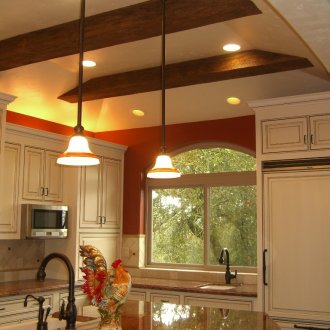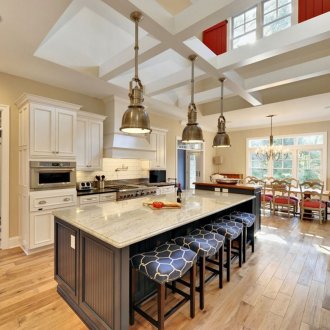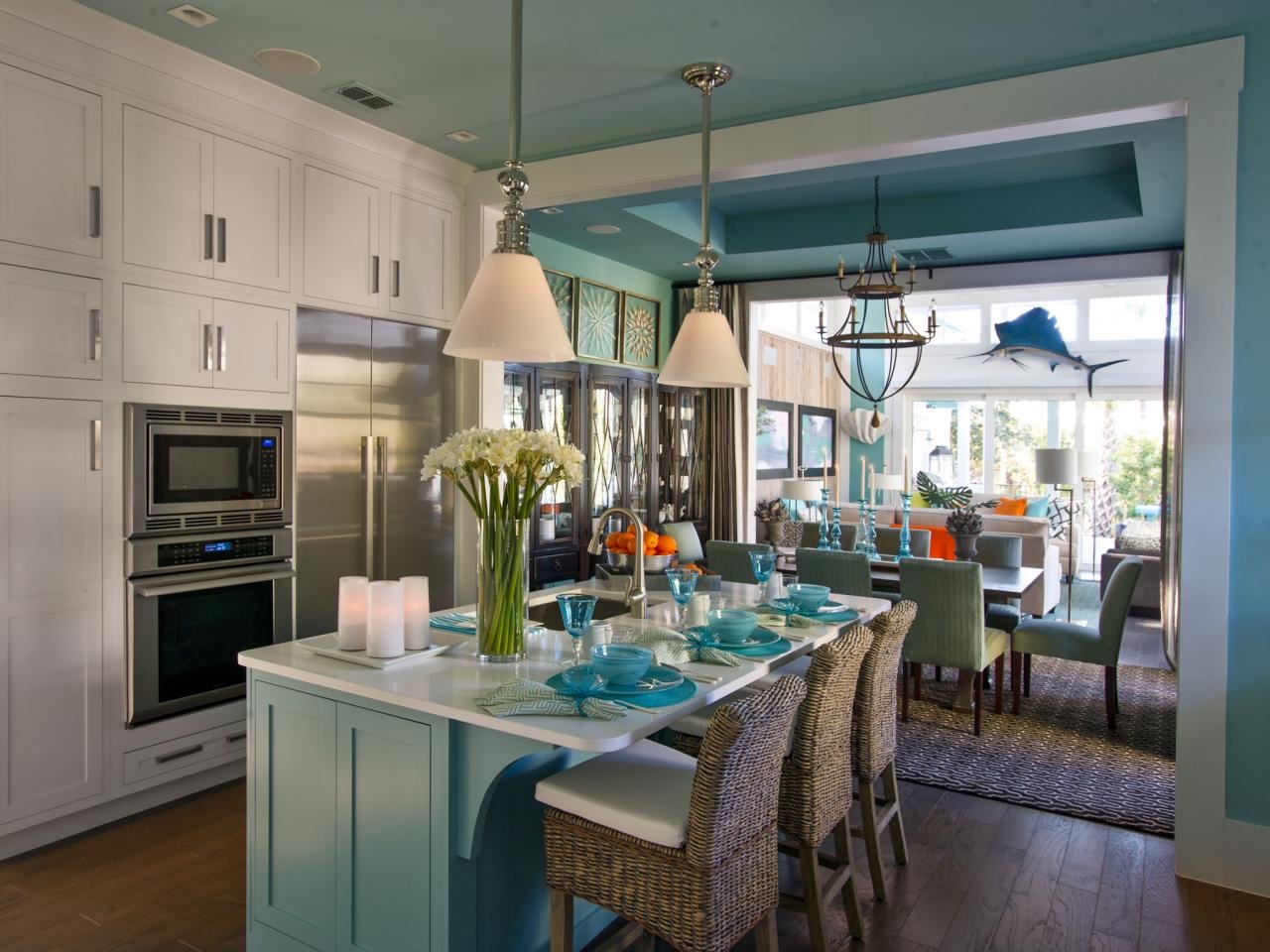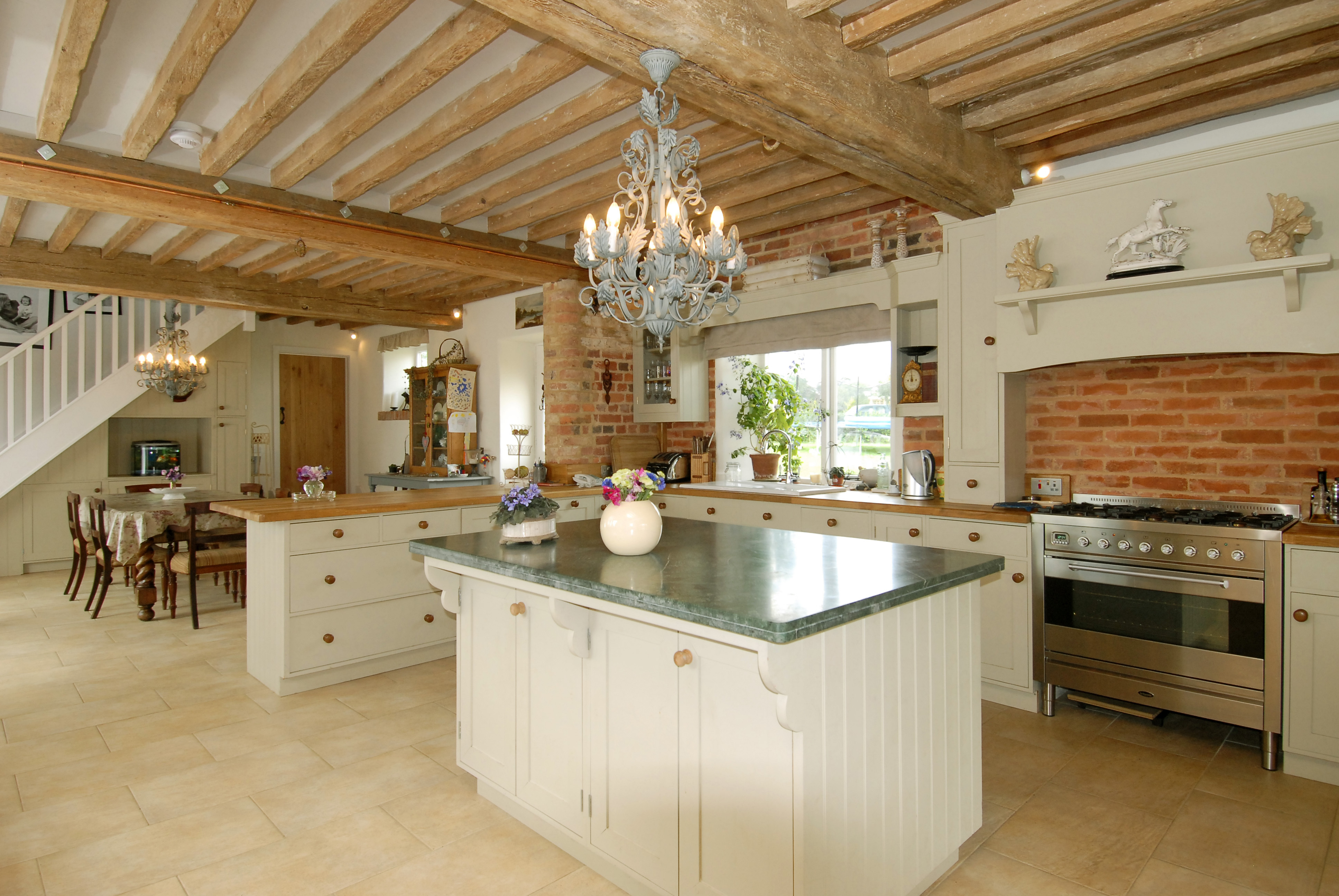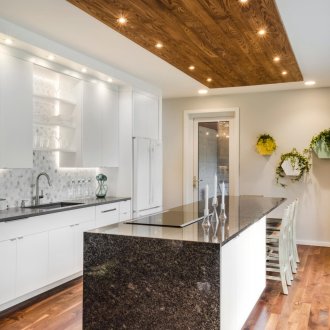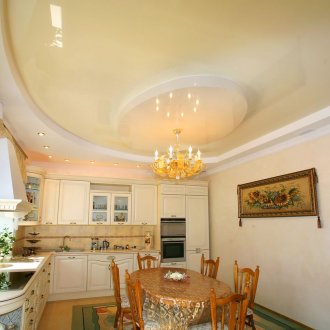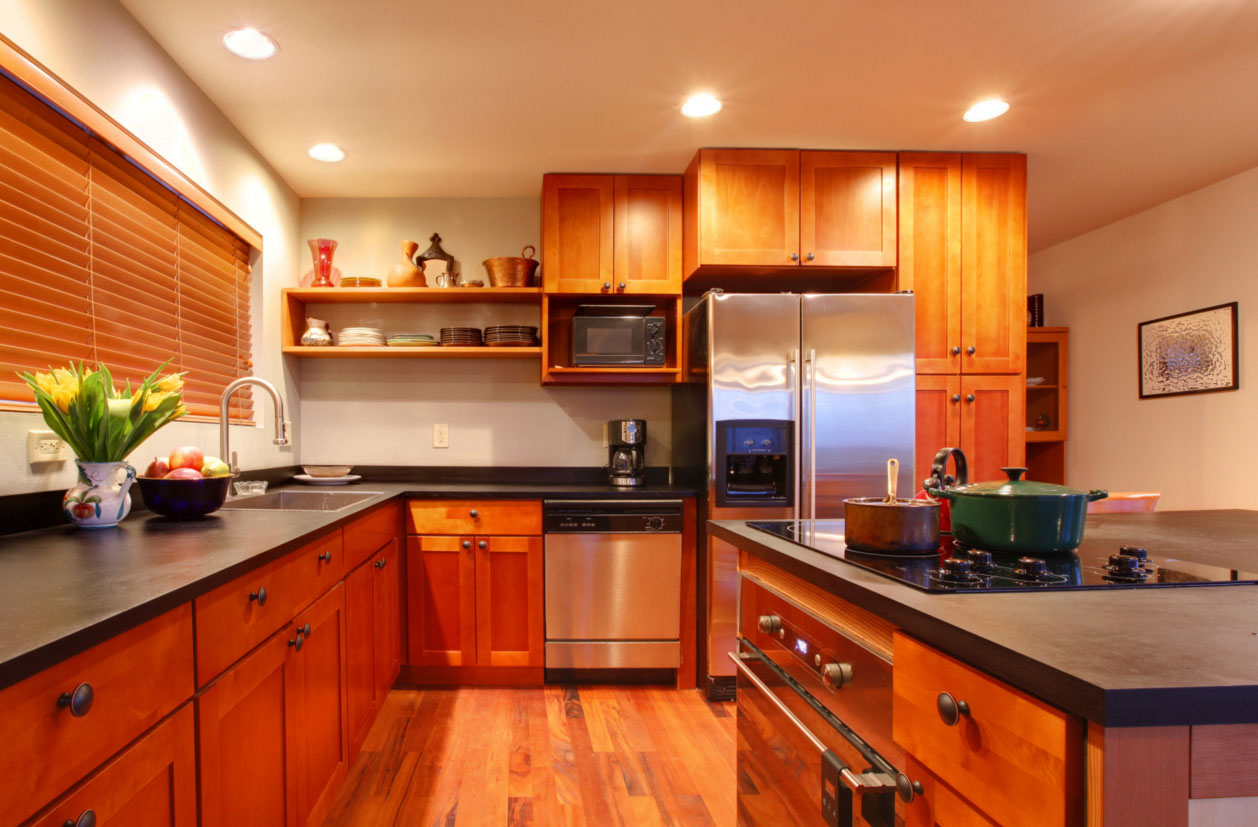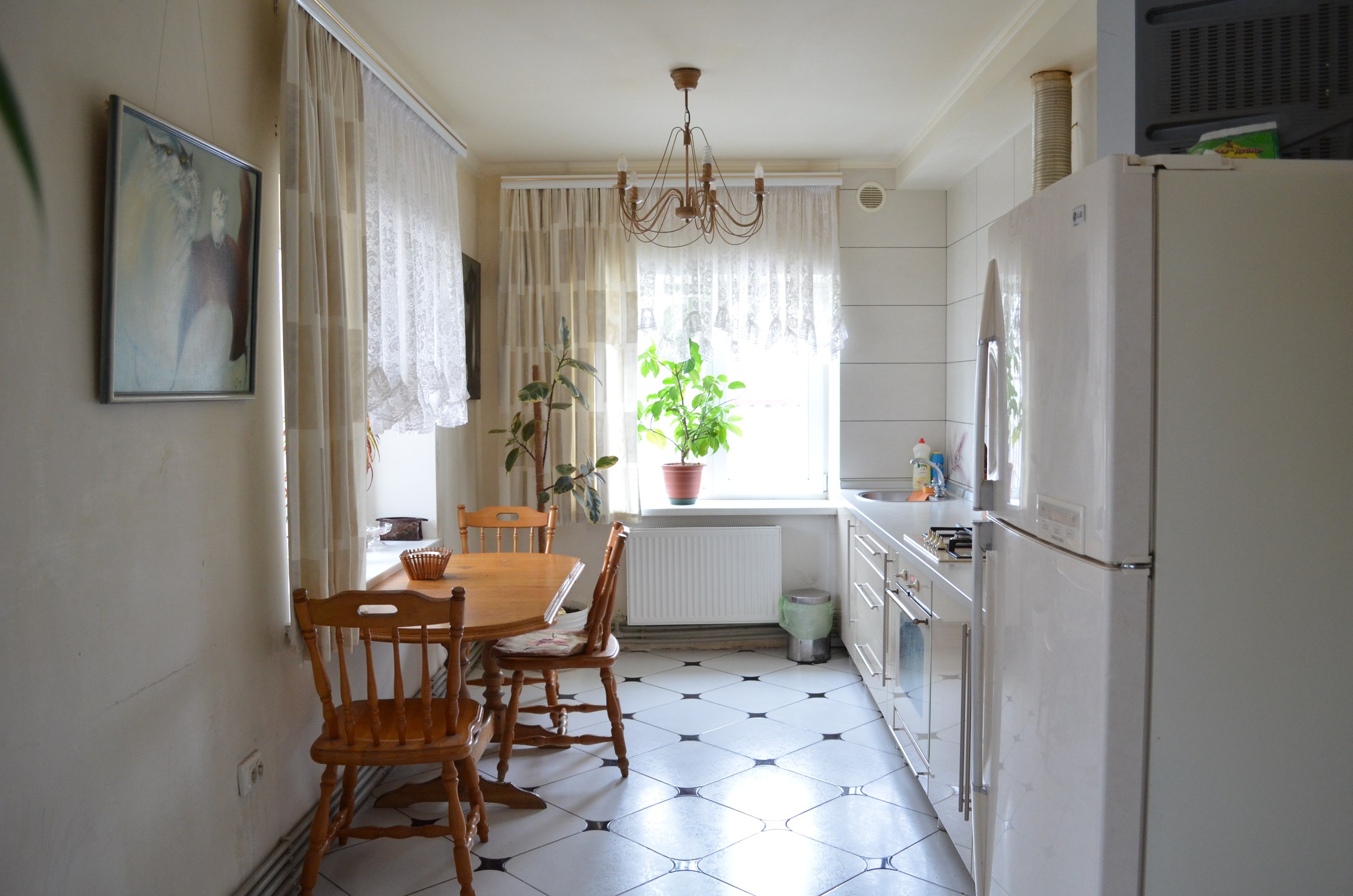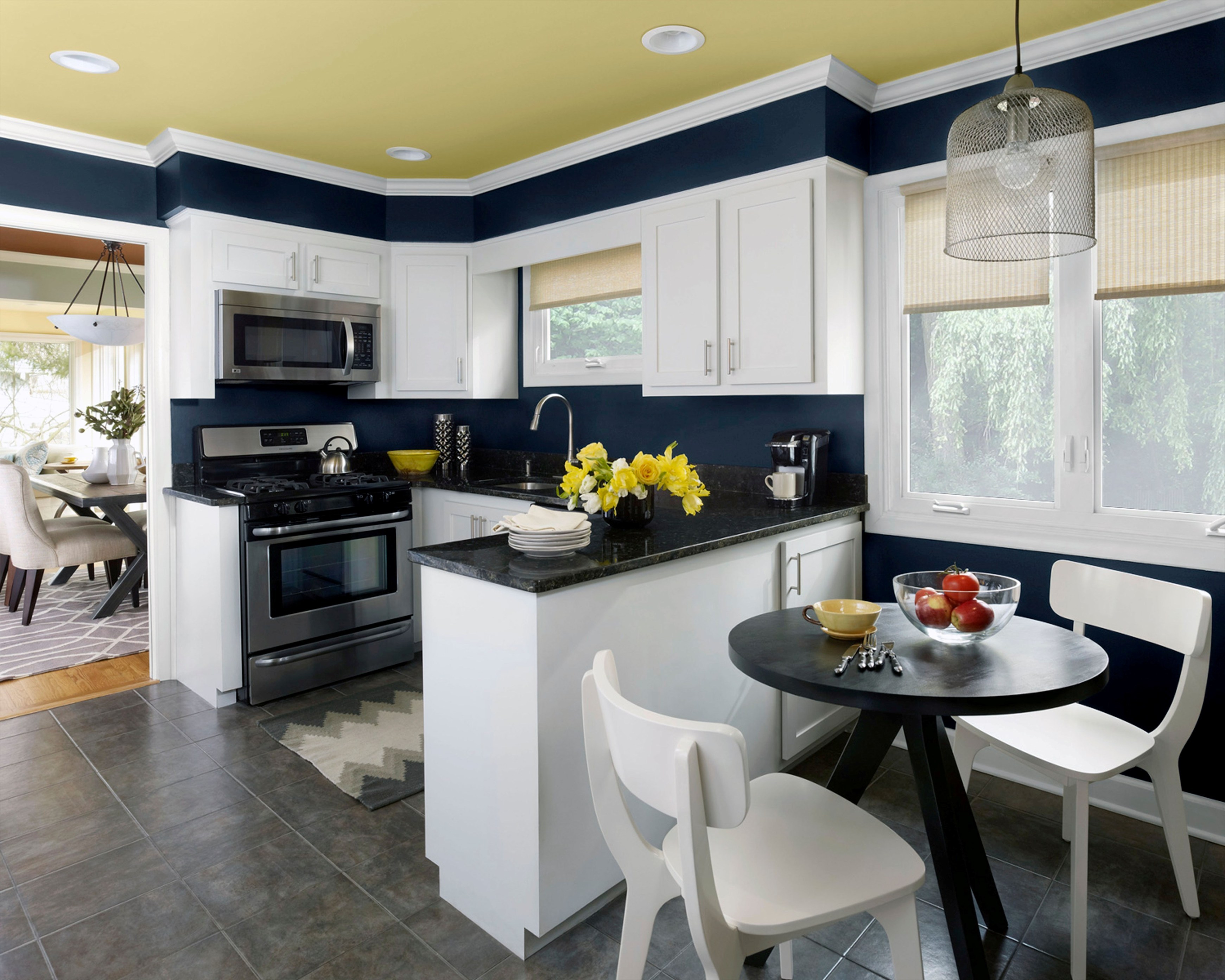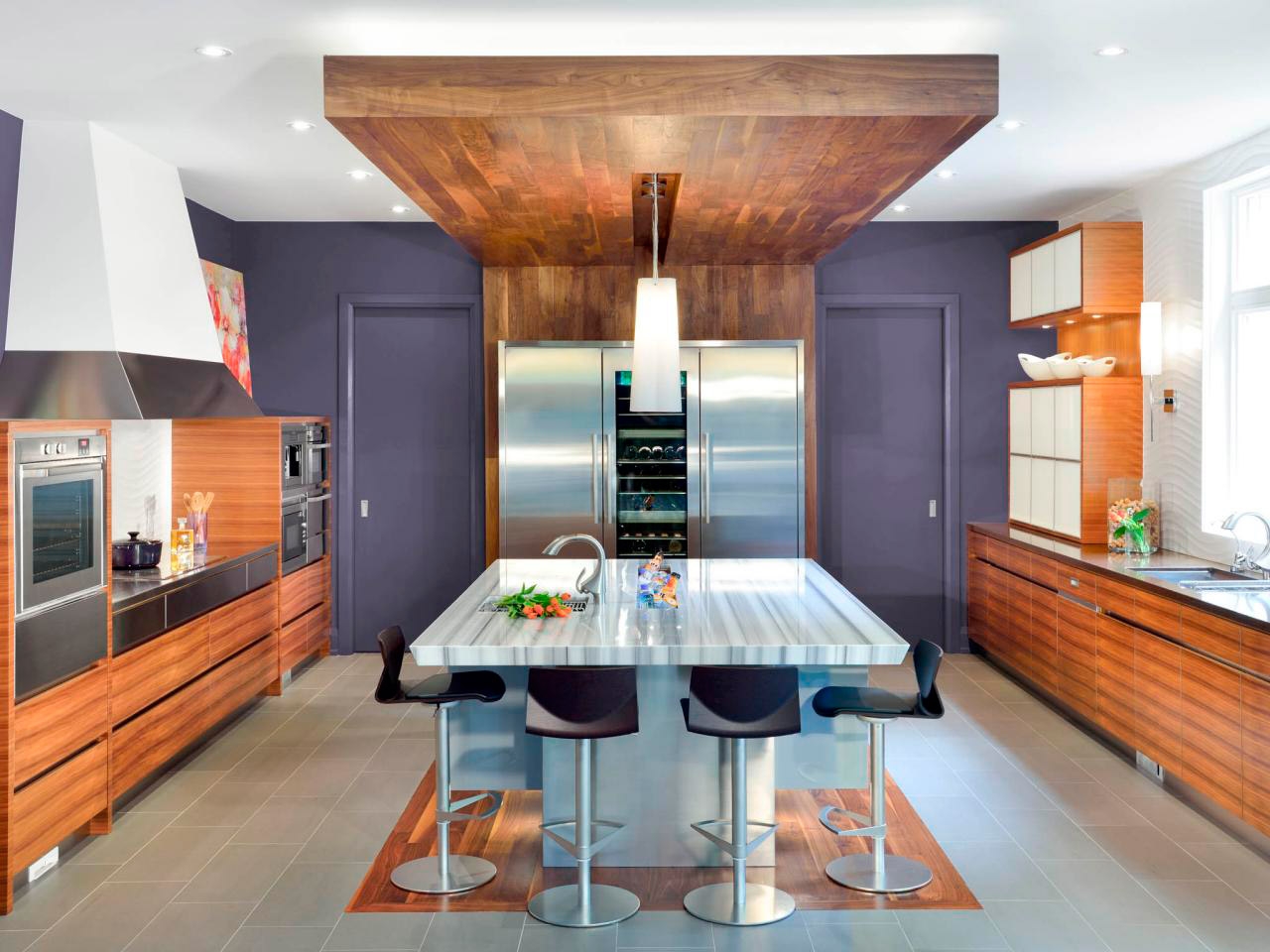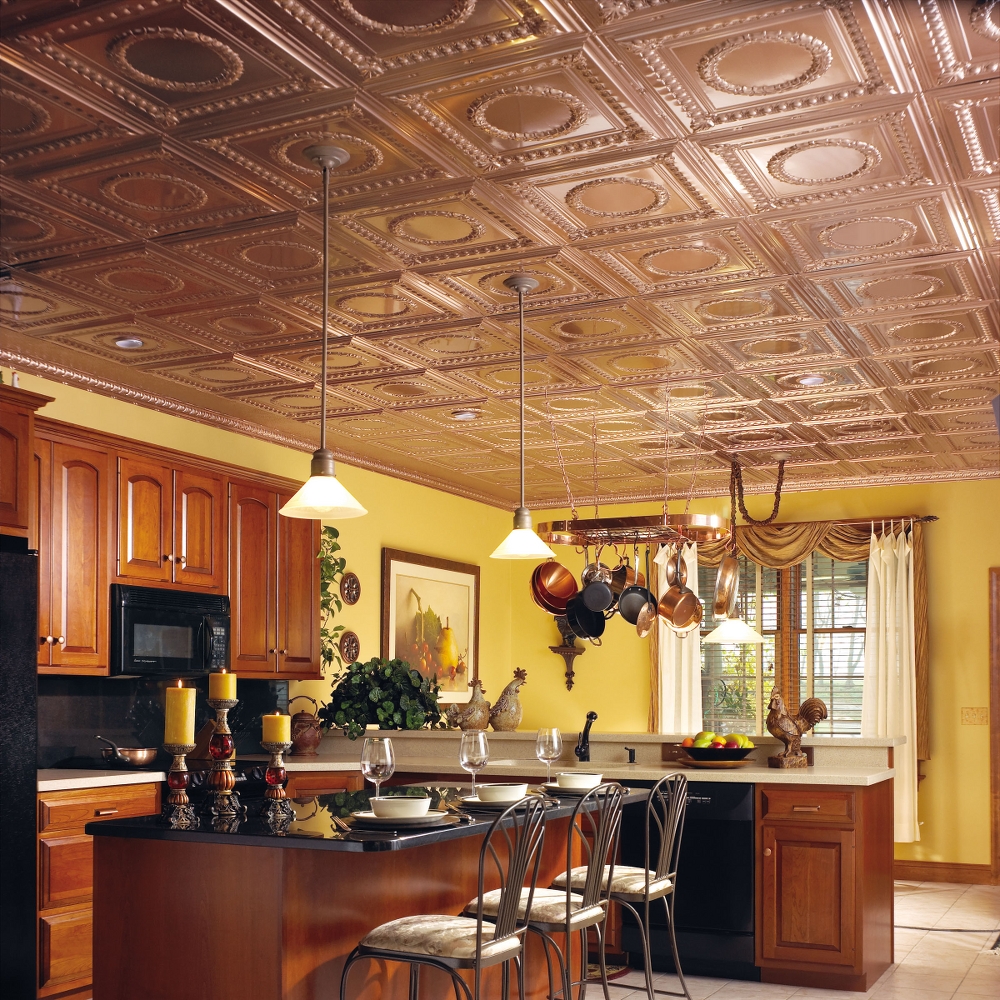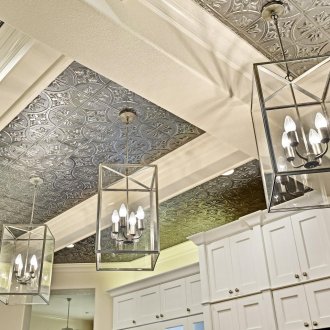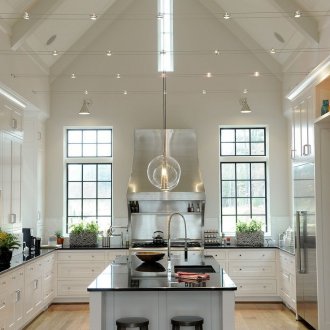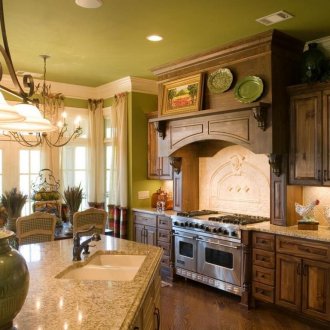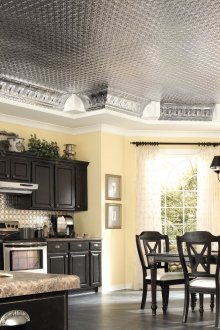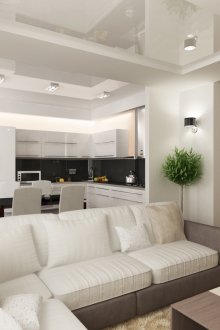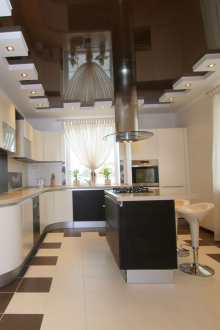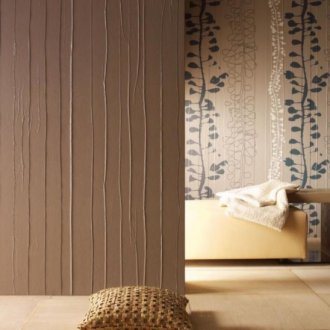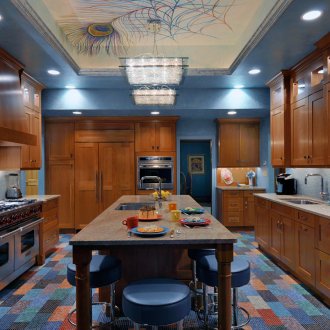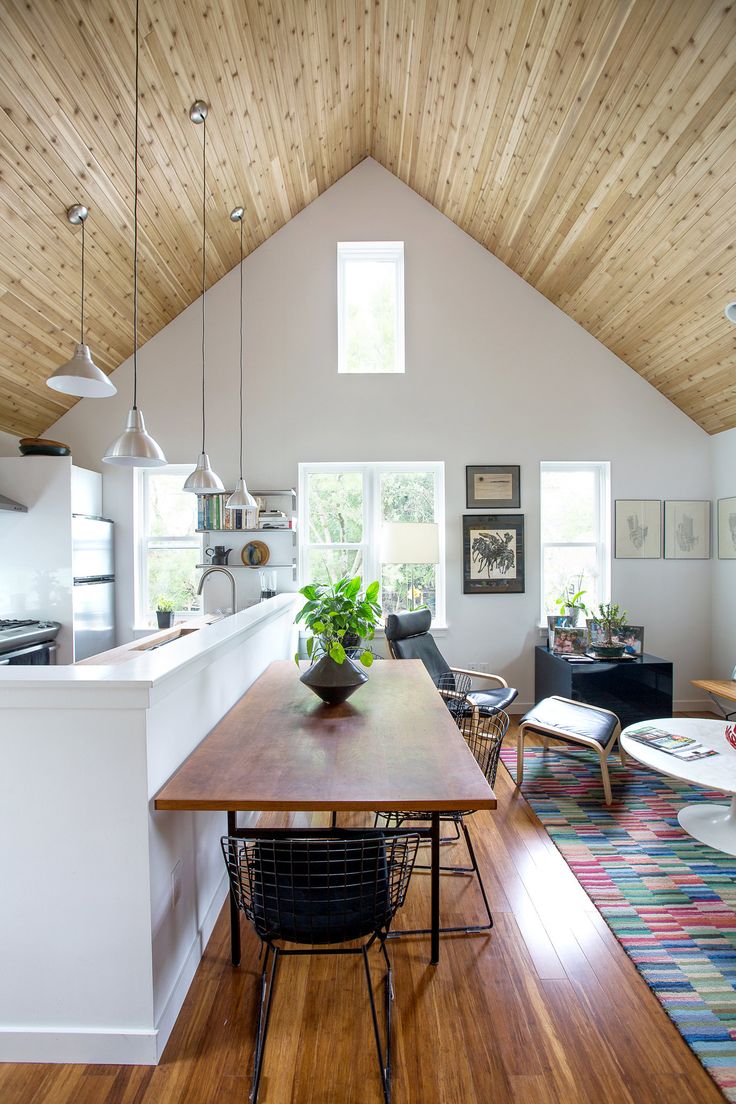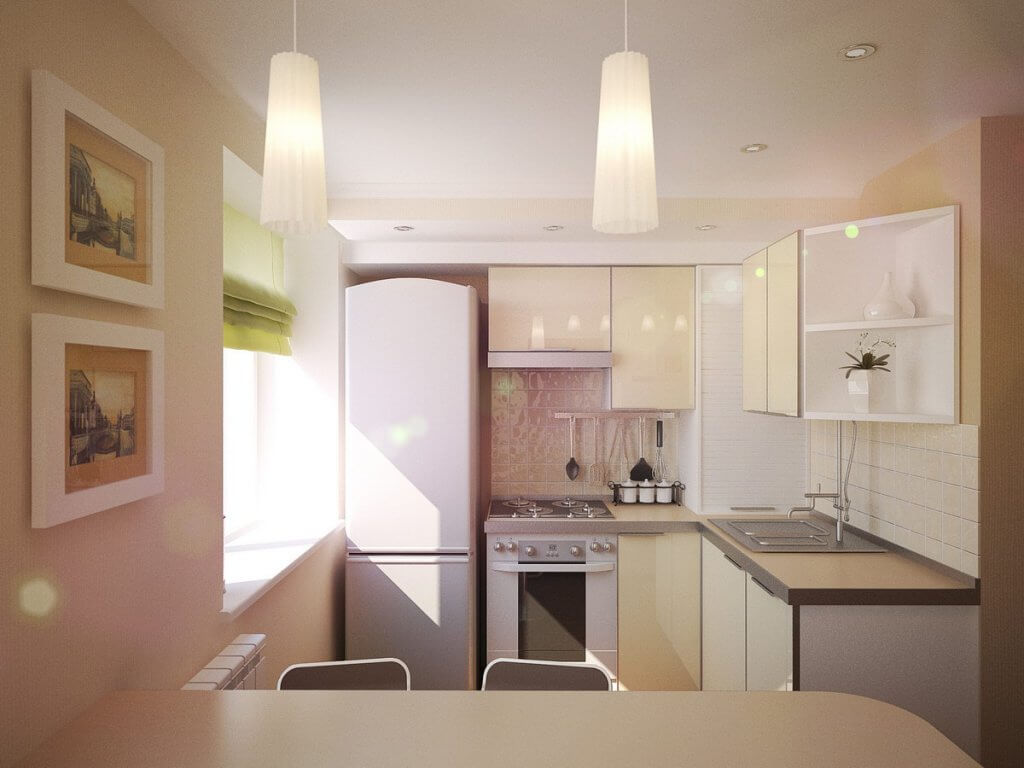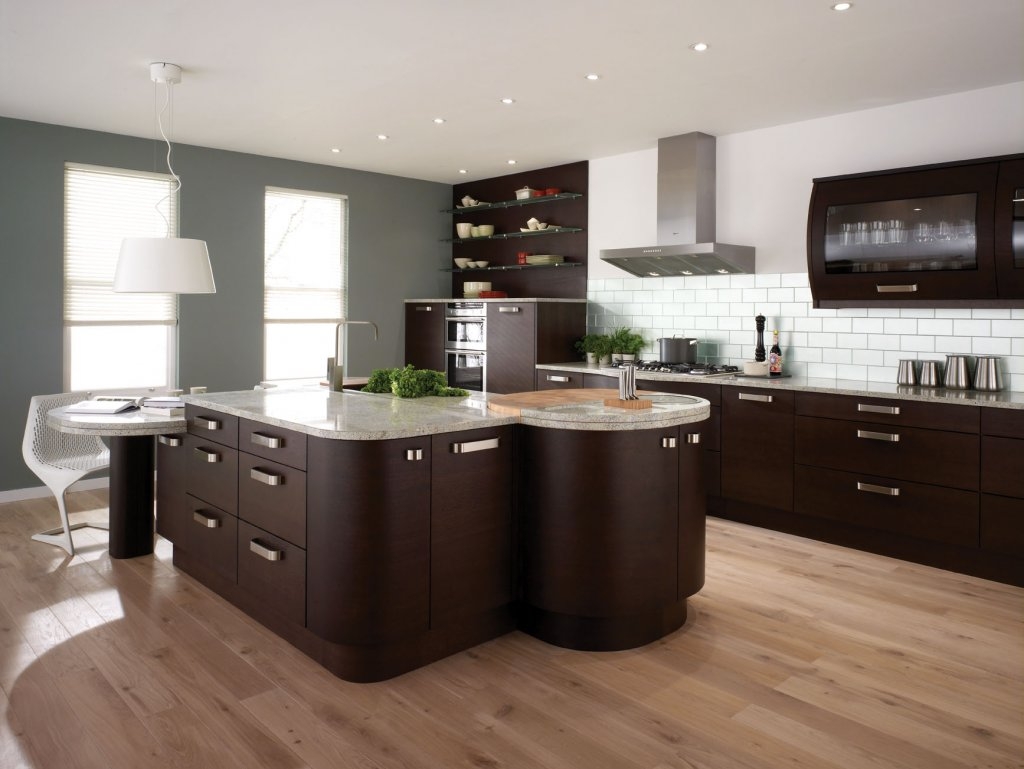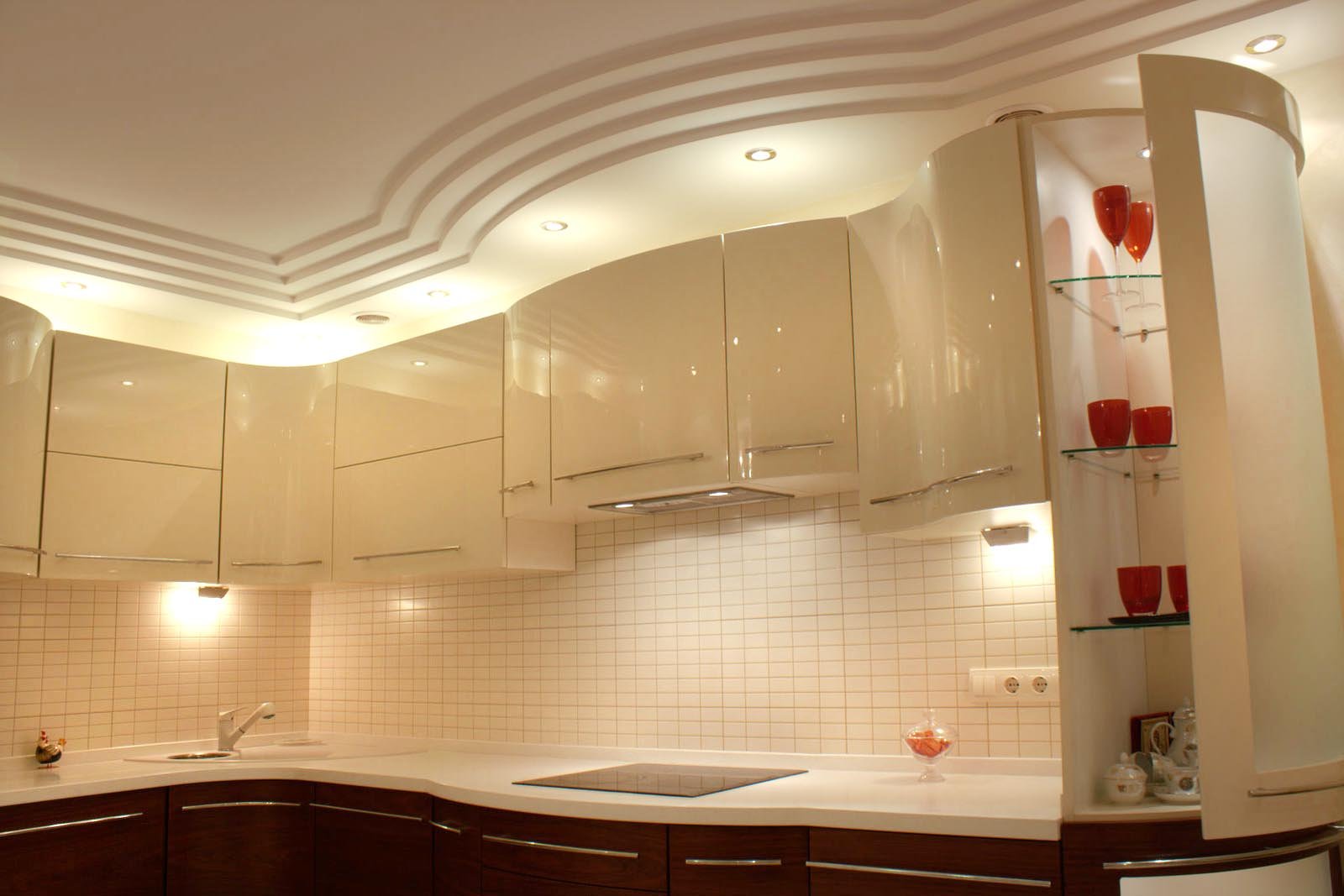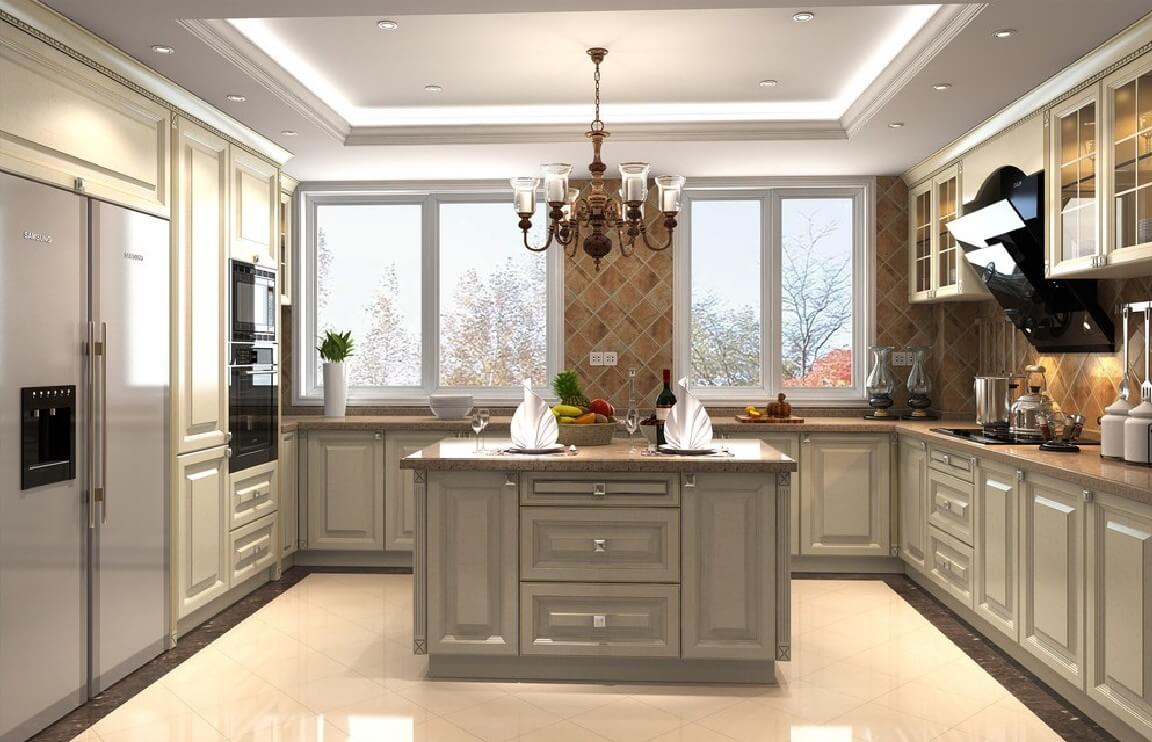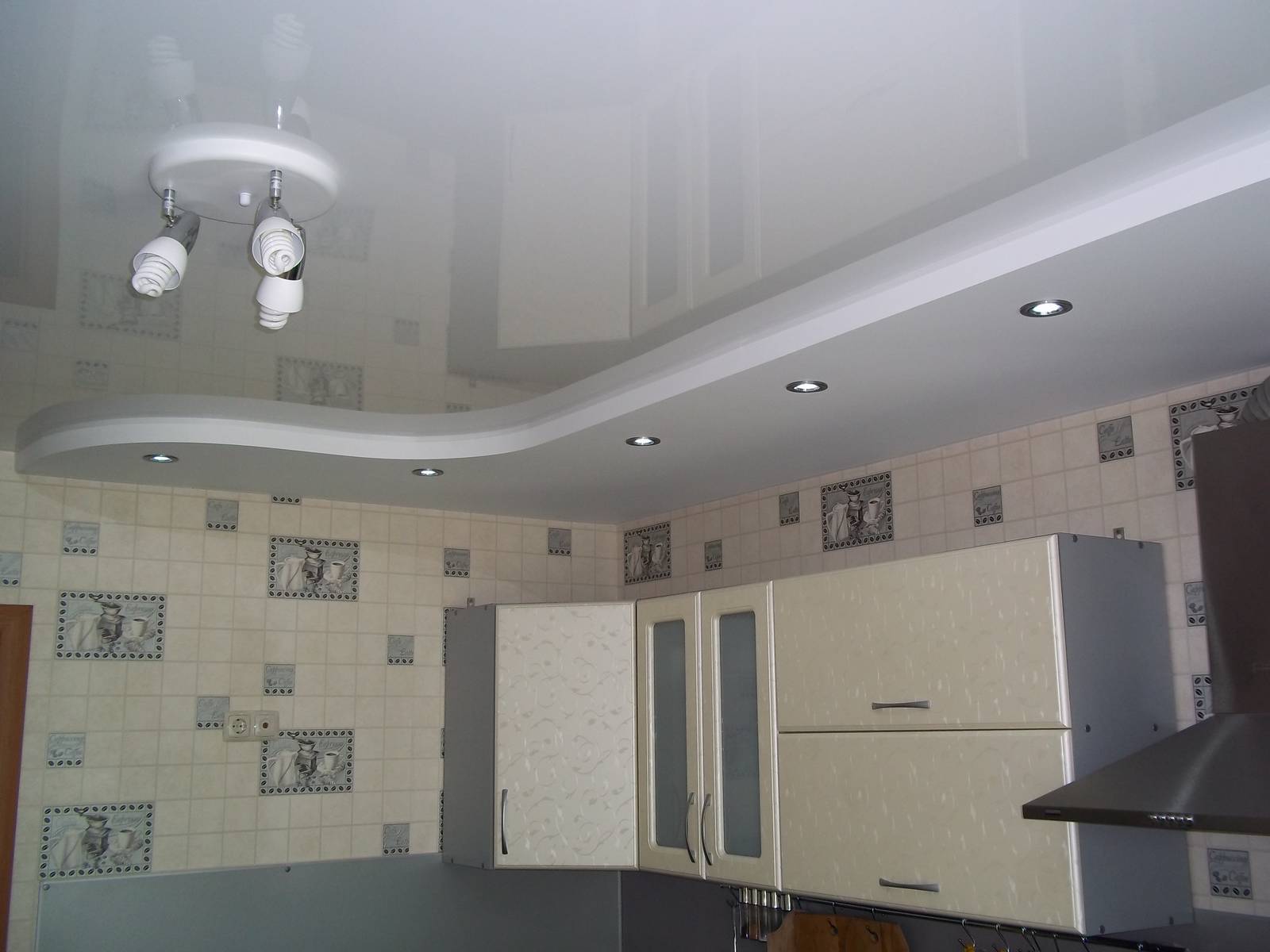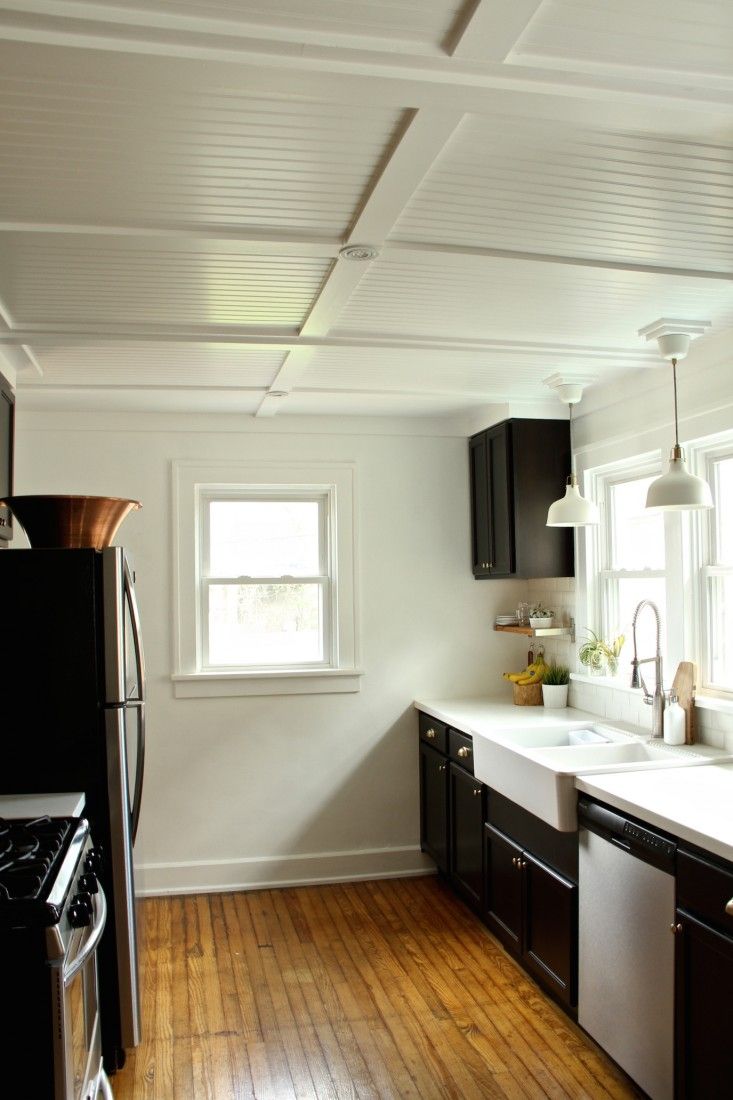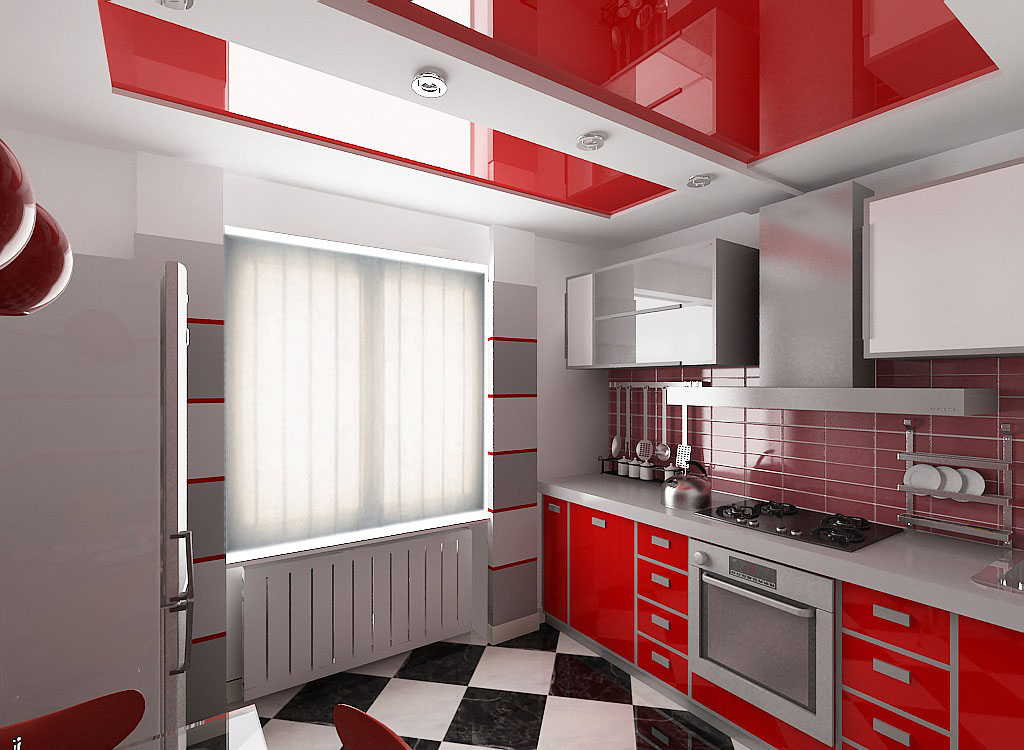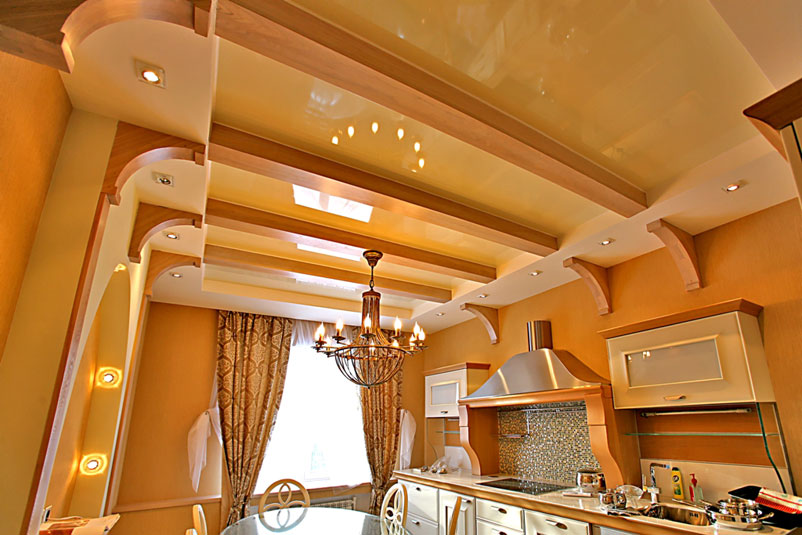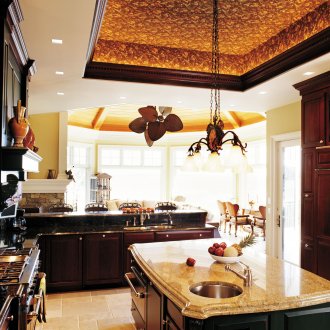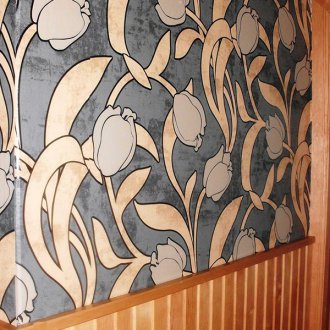Ceiling design in the kitchen: interesting ideas (29 photos)
Content
At all times, cuisine has been a cult place in the families of Russians. In the 80s of the last century, it was considered not only a room where food was prepared, but also a place for sincere conversations, so your design project for your favorite family corner should be given special attention - here, the look, color, and style of the ceilings are of the utmost importance.
Types of materials for decoration
Today there are several options for designing ceilings:
- painting or whitewashing after plastering;
- slabs on the ceiling are an inexpensive and quick way to give it a noble appearance;
- stretch ceilings give the kitchen an exquisite style (there is the opportunity to wipe them if necessary);
- the use of plasterboard false ceiling makes it possible to unfold imagination in full;
- the combination of several materials, different in texture and color, allows you to translate into reality almost any modern ideas.
Each of the above finishes has a right to exist, and they are all good enough. The choice of design should be justified, harmoniously fit into the main idea and correspond to the chosen style. When finishing all visible surfaces, the main thing is to do everything carefully and efficiently, or even better, hire a team of professionals so that you don’t have to redo anything later.
Whitewashing or painting
These options can be considered traditional methods of ceiling decoration, which are often used before. They were especially popular 15-20 years ago, and now they are used less and less, as they are considered quite complex and dirty.
Prior to painting, perfect surface leveling is necessary. To do this, use the usual putty, which is primed with all the visible flaws on the ceiling. Painting usually begins with the cornice and corners, and then go to the common central area.
The use of modern decorative plaster allows you to turn the simplest ceiling (and even with beams) into a masterpiece of art, it will give the kitchen room more volume and depth.
In this case, the main factor is considered to be the correct selection of color shades and patterns.
Stucco will be a great option if you need to hide existing defects or texture of a boring old ceiling. There is a color version of the plaster, and just white. Depending on the style and taste, choose the right one. You can create very original and strange kitchens (there is even a black ceiling).
After the pattern is applied to the surface, it is primed and the necessary color is applied. If you use glossy paint, the kitchen ceiling will gain depth; When using structural paints, minor defects can be successfully hidden.
Tile ceiling design
Most often used tiles made of polystyrene foam, various types of plastic, less often you can find options made of wood or glass. On the front side is often some kind of pattern or metal spraying, and sometimes the tiles may look like you are dealing with a wooden ceiling.
Installation work is quite simple and easy.The entire surface is drawn into squares, and then with glue the tile is fixed to the ceiling. If you want to visually expand the space of a small kitchen, then you need to pay attention to the glossy tiles.
Panels on the ceiling
Practical and fast, kitchen ceilings are mounted from plastic panels. This method is convenient in that it does not require laborious work to level the surfaces. First, the frame is assembled from a metal profile, and then the panels are assembled, somewhat reminiscent of the assembly of a children's designer. Such ceilings require the installation of corners made of plastic over the entire area, into which panels are connected, connected using special side grooves.
Plastic ceilings have their advantages: ease of installation, resistance to changes in temperature conditions, low prices, ease of care for them; but there is a small drawback: they easily lose their original shape even from small presses, so installation work must be carried out extremely carefully.
Stretch ceiling
Stretch ceilings have long been proven exclusively from the best side. They have many undeniable advantages:
- perfectly flat surfaces without the need for any leveling;
- the immunity of the material to water and steam;
- the material is aesthetically very attractive, and also durable.
There are several types of such ceilings: matte and glossy, with seams and without seams. Shades and colors can be made almost any. The ceiling height when using a metal frame is reduced by 10 cm, so stretch ceilings are ideal for kitchens with high ceilings.
For a room with a low ceiling, they are less suitable, but when the canvas is stretched and leveled using a special heat gun, the effect of a smooth and beautiful ceiling overshadows the lack of height loss. Installation is best not done independently, but entrusted to a team of professionals.
As for constructive solutions, they can be either single-level or multi-level, depending on the area of the kitchen and what design approach you are implementing. Using two-level ceilings, you can get rid of visible shortcomings or hide wiring and communications.
Such a two-tier option will make it possible to divide the room into zones for rest and cooking, for example, in the premises of a kitchen-studio. Caring for the material of such ceilings is quite simple: you can wash it with a rag and a soap solution.
Plasterboard suspended ceilings
This is one of the most popular types of ceiling frame structures that are mounted on a concrete ceiling. They have several indisputable advantages: relative ease of installation, resistance to steam or moisture. The suspended design allows you to easily hide the wiring or pipes, panels with spotlights.
If a single-level ceiling is installed, then it is important to correctly fix the metal frame from the profiles (at a distance of at least 10 cm from the concrete ceiling). After that, gypsum board plates are fixed using screws. It is better to glue the joints between the plates with a specialized mesh, and then prime.
The following are finishing work. To do this, you can use paints, wallpaper, tiles or decorative plaster. For kitchens it is recommended to use drywall that is not afraid of moisture.
To give the kitchen a unique style and shape, as well as highlighting different zones, you can use the option with multi-level ceilings. Such installation work requires professional skills and calculations, and therefore requires the knowledge of real professionals.
If the kitchen or room is small, then you should not complicate the design too much. It is better to make a single-level ceiling. The main thing in this case is to plan the proper lighting of the kitchen.To do this, a chandelier is placed in the central part - the main light source, and in other places a backlight is created with the help of many small light sources.
Combined Ceilings
Combined ceilings involve the mixing of various materials. Most often you can find stretch ceilings using plasterboard plates. Less common is the connection of drywall with decorative plaster. Creating multi-level combined ceilings requires high skill. Most often, whole teams of masters work on them.
Mixing finishing materials allows you to implement interesting interior solutions. To realize the unique design of your dream kitchen, boldly translate your fantasies and innovative solutions into real life.
